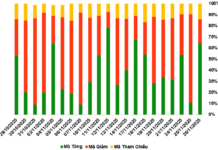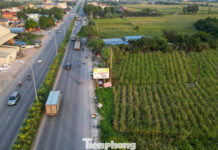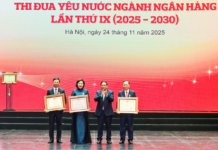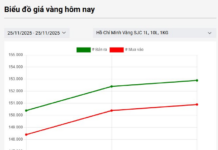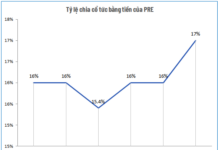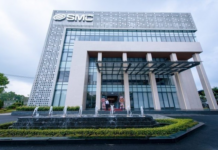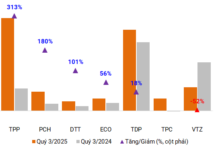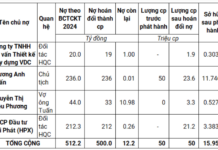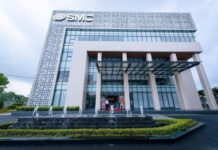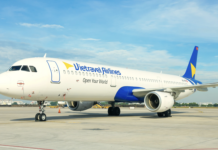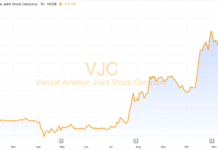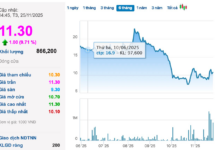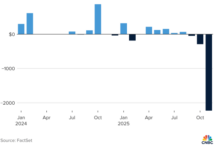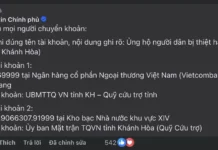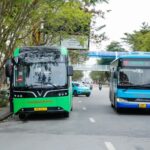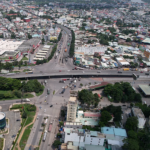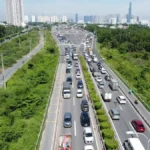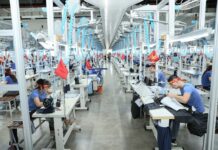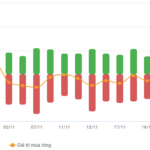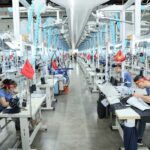Each afternoon, without fail, National Highway 1 at the Tan Van intersection (Di An Ward, Ho Chi Minh City) is plagued by heavy traffic congestion.
Exhaustion on the National Highway
Rows upon rows of container trucks and heavy-duty vehicles are at a standstill, their exhaust pipes spewing black smoke into the air. The incessant honking of horns, coupled with the exasperated head-shaking and weary faces of drivers, paint a familiar picture at the Tan Van intersection.
Motorcyclists fare no better as they weave their way through narrow gaps, struggling to stay close to the dividing line in their quest for forward momentum.
The Tan Van intersection acts as a bottleneck where container trucks from industrial parks in the old Binh Duong area merge with vehicles heading to Dong Nai and Central Vietnam, creating a permanent traffic chokepoint.
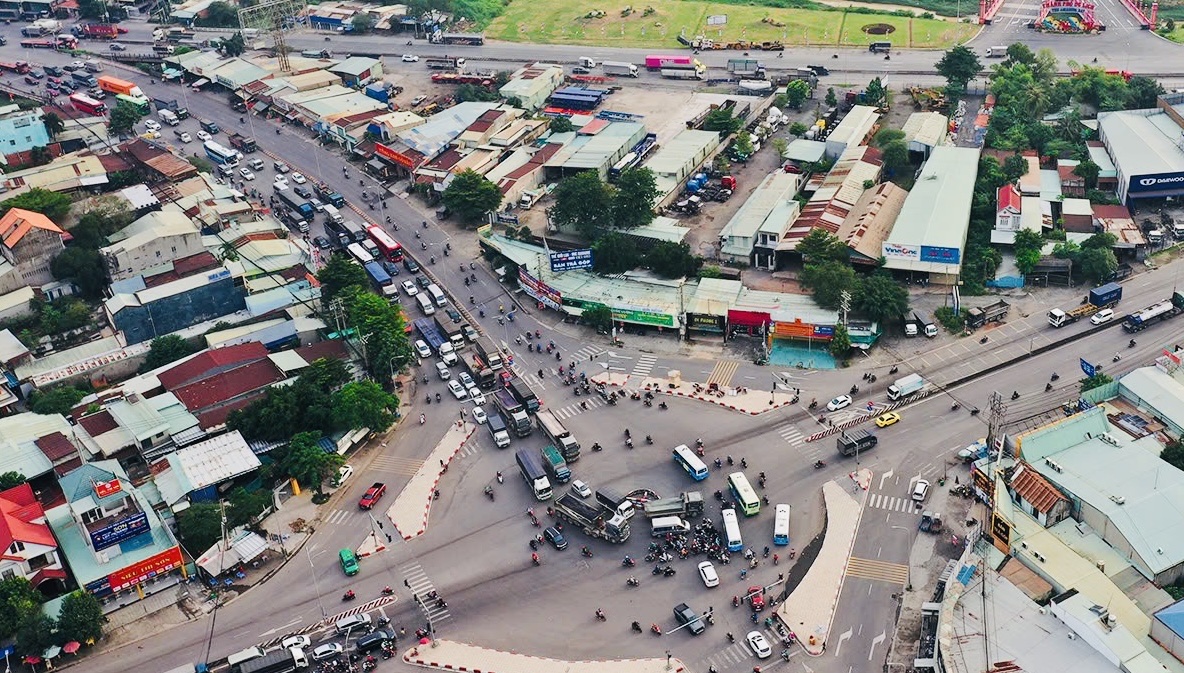
National Highway 51 at the Vo Nguyen Giap roundabout frequently experiences traffic congestion. Photo: NGUYEN TUAN
Not far from this spot, along National Highway 51, a sea of vehicles stretches for hundreds of meters, their brake lights glowing red. Many drivers switch off their engines, resigned to the inevitable delay in their journey.
National Highway 51 currently bears the burden of over 60,000 vehicles per day, double its designed capacity, despite having been expanded to 6-8 lanes. During weekends and holidays, there is a surge in tourist buses and cars traveling from Ho Chi Minh City to the old Ba Ria – Vung Tau area, while the stream of container trucks entering and exiting the Cai Mep – Thi Vai port complex remains constant, making this route a hot spot for traffic jams.
Untangling the Knot
In addition to facilitating inter-regional connectivity, National Highway 1 and National Highway 51 are crucial freight transport routes to and from seaports, airports, and industrial parks. The challenging mobility situation is exerting immense pressure on both residents and businesses.
“Normally, it would take me just an hour to transport goods from the Song Than Industrial Park to a port in the old Binh Duong area, but now it takes three hours some days. The delay not only incurs additional charges but also leaves me utterly exhausted,” shared Tran Van Tai, a driver from Dong Nai province, expressing his hope for an end to this daily ordeal.
According to the Department of Construction, the Ho Chi Minh City Master Plan for the period up to 2030, with a vision towards 2050, which was approved by the Prime Minister in 2017, ensures well-connected transportation networks.
However, in reality, the transportation infrastructure still falls short in several aspects.
Specifically, in the road sector, important ring roads remain incomplete, and newly constructed expressways have quickly become overloaded due to only being in the first phase of operation.
Moreover, persistent traffic hotspots like National Highway 1 at Tan Van, National Highway 13, and National Highway 51 have become bottlenecks for the entire Southeast region, directly impacting freight transport, logistics operations, and the daily commutes of locals.
To address these bottlenecks, Ho Chi Minh City, following the merger, prioritized the implementation of several key infrastructure projects.
Notably, the city accelerated the construction and completion of Ring Road 3 and Ring Road 4 to enhance inter-regional connectivity, along with the development of expressways such as Ho Chi Minh City – Moc Bai and Ho Chi Minh City – Thu Dau Mot – Chon Thanh, in tandem with the upgrading of vital national highways like National Highway 13 and National Highway 22.
The construction of river-crossing bridges was also included in the city’s strategic plans to eliminate connectivity obstacles.
Plans for “Three Types of Roads”
Regarding railways, the city focused on the high-speed North-South railway section between Ho Chi Minh City and Nha Trang and the Bien Hoa – Vung Tau route dedicated to freight transport to seaports. Simultaneously, the city is studying the investment in a direct connection between Ho Chi Minh City and the Long Thanh International Airport, as well as crucial industrial production areas.
In the field of waterway and seaport development, the plan emphasizes the synchronized investment in infrastructure and the upgrading of the Cai Mep – Thi Vai and Sao Mai – Ben Dinh port complexes to international standards. Additionally, the establishment of inland container depots (ICDs) to relieve pressure on roads and the formation of modern logistics centers in strategic locations are also priorities. Furthermore, international passenger port systems in Vung Tau, Long Son, Song Dinh, and Con Dao will receive substantial investment to bolster both passenger transportation and marine tourism.
In the aviation sector, the key lies in integrating the operations of the Long Thanh International Airport with Tan Son Nhat International Airport. Ho Chi Minh City also aims to expand Con Dao Airport to meet rising demand and construct two dedicated airports in Go Gang and Dat Do to support civil aviation and tourism development.
Notably, public transport is identified as the linchpin in tackling traffic congestion and pollution. Ho Chi Minh City intends to expand its metro network, with Line 1 extending to the old Binh Duong area and Line 3B connecting to Dong Nai province.
Furthermore, BRT systems along ring roads will be established, complemented by the development of rapid buses, electric buses, and vehicles utilizing green energy. All these efforts are geared towards creating a modern, environmentally friendly public transport network that enhances the urban quality of life.
Non-structural Solutions
According to bridge and road engineer Tran Van Tuong, previously, the infrastructure and master plans of each locality varied significantly. Following the merger with Binh Duong, Ba Ria – Vung Tau, and Ho Chi Minh City, the entire urban, industrial, port, and tourism landscape needs to be adjusted to better accommodate development needs and prevent overlap.
With the expansion of Ho Chi Minh City’s port system to include the Phuoc An and Cai Mep – Thi Vai ports, along with the establishment of numerous large industrial parks in Binh Duong and the key tourism area, it is imperative to develop a synchronized transportation infrastructure.
Waterways are also considered a vital mode of transport. According to Engineer Tuong, the expanded Ho Chi Minh City, now a “mega-city” with hundreds of kilometers of coastline and an extensive network of rivers, has a distinct advantage in developing water transport, including the Can Gio – Vung Tau route and the prospective Can Gio – Vung Tau bridge.
Specifically, regarding road transport, Mr. Tuong acknowledged that National Highway 51 has been congested for many years, severely impacting the mobility of locals and logistics operations.
“A truck carrying seafood from the Ba Ria – Vung Tau area to central Ho Chi Minh City, stuck in a 4-5 hour traffic jam, incurs significant losses for the business,” he illustrated.
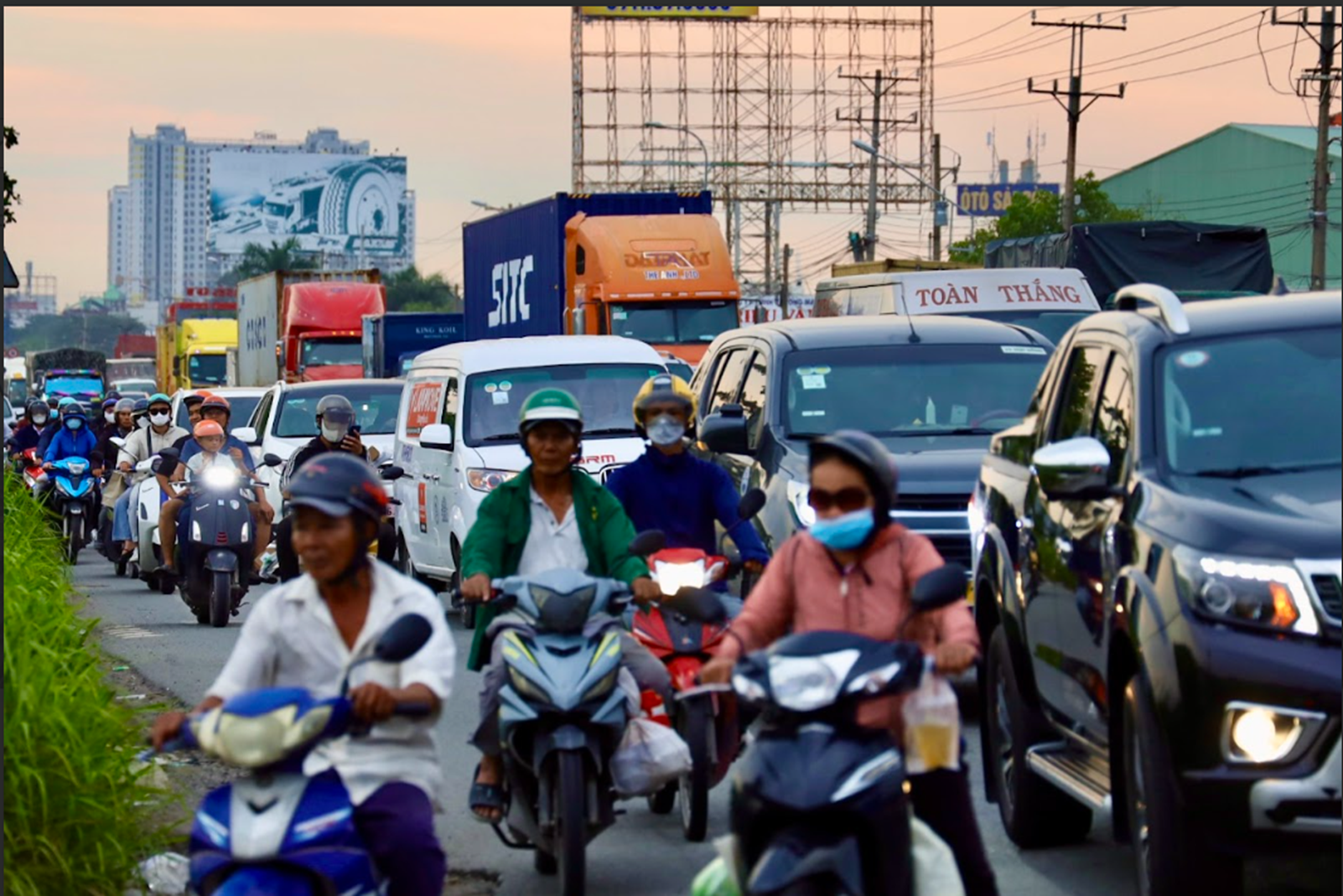
Solving traffic issues will bring significant benefits to socio-economic development. Photo: NGOC QUY
Mr. Tuong proposed that Ho Chi Minh City should first focus on non-structural solutions such as adjusting intersections, restricting large trucks from making U-turns, and re-organizing traffic flows.
In the long term, the city should expedite the operation of the Bien Hoa – Vung Tau expressway to replace National Highway 51, alleviating traffic congestion and serving passengers traveling to Long Thanh Airport in the future.
For other congested routes, Mr. Tuong suggested exploring non-structural solutions as well.
Unlocking the Capital: Free Rides on Hanoi’s 130 Bus and Metro Routes from August 30 to September 2
From August 30th to September 2nd, Hanoi is offering free rides on all subsidized buses and the metro to celebrate the 80th anniversary of National Day. This initiative is open to both locals and tourists, providing a unique opportunity to explore the city and its attractions without the cost of transportation.
The Elevated Highway Project Along National Highway 51 in Dong Nai: Unveiling Dynamic Developments
“During a meeting with the People’s Committee of Dong Nai province, Ho Chi Minh City Technical Infrastructure Investment Joint Stock Company revealed that out of the two proposed financial plans, the investor consortium recommended selecting option 2, which estimates a total investment of nearly VND 16,600 billion for the project. The entire project’s capital will be sourced through the Build-Operate-Transfer (BOT) model, including loan interests.”
The First Glimpse: Unveiling the Billion-Dollar Underpass Project on National Highway 13
The Phuoc Kien intersection has been chosen as the site for the first underpass to be constructed on National Highway 13 in Ho Chi Minh City. The busy route, particularly the Huynh Van Cu section, has long been a bottleneck for traffic, with a constant stream of trucks, containers, and cars causing lengthy tailbacks as they queue to cross the Phu Cuong Bridge towards Thu Dau Mot.
Unveiling 22 Social Housing Projects: A Grand Celebration for the 80th National Day
In celebration of the 80th National Day, a total of 250 projects with a combined capital of 1.28 quadrillion VND were inaugurated and commenced. Among these projects, 22 were dedicated to social housing, a testament to our commitment to providing affordable and accessible living solutions for all.



